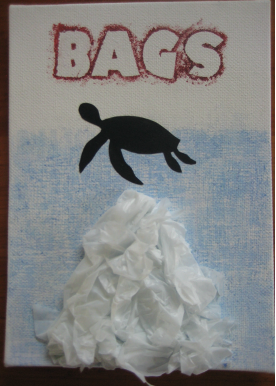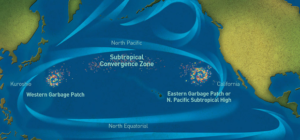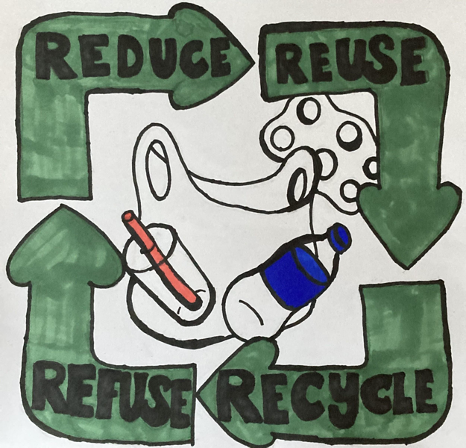There’s a Pollution Problem in Our Oceans: Killer Plastic!
By: Miriam Willock, Nauticus Education Volunteer and Youth Action Council Member, 14 years old

Plastic pollution is a man-made problem that can be very deadly for fish and other marine life. It clogs our streets, creates islands of trash in the ocean, and becomes food for unsuspecting animals.
One of the ocean’s most famous inhabitants, the leatherback turtle, is often found with plastic bags in its stomach. The turtle can mistake plastic bags for one of its main prey, jellyfish, and unknowingly, eat the pollution. This would be harmful to any living being, but especially sea turtles. This is due to a special adaptation called papillae, similar to barbs lining their mouths and throats. This prevents jellyfish from trying to escape or being expelled from their mouths with excess water. Unfortunately, because of this adaptation, turtles cannot remove plastic bags or any other pollution from their throat and can cause them to choke.
According to The Ocean Cleanup (www.oceancleanup.com), almost 2.5 million tons of plastic pollution is flowing into our oceans from rivers each year. The plastic pollution that doesn’t get eaten by marine life like sea turtles, gets swept away into ocean current gyres that circulate the ocean waters around the world. In these rotating gyres, the pollution collects into massive mounds and becomes major islands of trash. In fact, some of these islands even have names, like the Great Pacific Garbage Patch. This spot, alone, is more than twice the size of Texas. This area is just the largest one of the five total trash islands found globally. The Great Pacific Garbage Patch and many other areas in other oceans, including the Atlantic Ocean and the Indian Ocean, are only going to grow.

(Photo Credit: 2020, NOAA National Ocean Service- “Great Pacific Garbage Patch”)
Call to Action!
All of these negative effects caused by plastic pollution are easily preventable which is why I’m asking you for your help combating this deadly problem, so our future and our oceans will be brighter and filled with more clean and less litter filled water. All I ask is for you to try and help through a six simple actions:
- Reduce the amount of plastic you use and buy.
- Refuse plastic when possible, such as refusing plastic straw or plastic bags.
- Reuse. Try to use reusable items instead of single use items such as plastic bags. Instead, I’d recommend using cloth bags for your groceries.
- Recycle any plastic you use to reduce the amount of waste in our landfills.
- Pick up any litter found on the streets, so it doesn’t wash into our rivers and oceans.
- Try not to contribute to the litter found on the streets. If you do, you’re making more work for yourself and others to do in step five.

If you take part in these six simple steps, you’ll be amazed at the impact it will make! You can also help spread the word to make a better and even bigger impact on our future and our world!
Thank you!
Sources:
More about the great pacific garbage patch
More about sea turtles
More about plastics effects on sea turtles